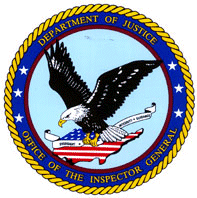
 |
The FBI Laboratory: An Investigation into Laboratory Practices
and |
| November 1932 | Officially established as the "Criminological Laboratory" in room 802 in the Old Southern Railway Building at Thirteenth Street and Pennsylvania Ave., N.W. The first month in which there was active examination of cases, the Laboratory handled 20 cases; after a full year, a total of 963 examinations had been performed. |
|---|---|
| June 1933 | Became known as the "Technical Laboratory." |
| September 1934 | Relocated to the Department of Justice Building at Ninth Street and Pennsylvania Avenue, N.W. |
| December 1942 | Designated by the Director as a Division with an Assistant Director in Charge. |
| August 1943 | Name changed to the "FBI Laboratory." |
| January 1975 | Began offering specialized scientific courses for State and local crime laboratory personnel at the FBI Academy, Quantico, Virginia. |
| September 1975 | Moved to its present location in the J. Edgar Hoover Building. |
| June 1981 | Formal dedication of the Forensic Science Research and Training Center, Quantico, Virginia, which provides forensic science training to State and local crime lab personnel and conducts forensic research. |
| 1932 | Typewriter Standards File created. |
|---|---|
| 1933 | National Fraudulent Check File and Single Fingerprint Section established. |
| 1934 | Polygraph research initiated; Anonymous Letter File established. |
| 1935 | FBI National Automotive Paint File and Reference Firearms Collection established. |
| 1936 | First use of polygraph in a criminal case. |
| 1937 | First use of the ABO blood group testing on forensic evidence. |
| 1939 | Metallurgical services offered. |
| 1941 | Cryptanalysis/Translation Section formed; microdot camera first used; Special Projects began preparing trial charts for prosecution. |
| 1950 | Bank Robbery Note File established. |
| 1968 | First use of bank robbery film for clothing identification. |
| 1972 | Explosives Unit created following numerous bombings by the Weather Underground or Weathermen. |
| 1973 | Photocopier File established. |
| 1979 | Digital Image Processing initiated. |
| 1983 | Racketeering Records Analysis Unit established. |
| 1984 | Laboratory received its first computer analysis case. Language Services Unit formed. |
| 1985 | Shoeprint File computerized to make identification of shoeprints easier. |
| 1987 | Laboratory's first identification of cocaine in hair. Anonymous Letter File computerized. |
| 1988 | DNA Analysis Unit created, making the FBI Laboratory the first public crime lab in the United States to perform forensic DNA analysis. |
| 1989 | Firearms-Toolmarks Unit initiates development of DRUGFIRE program, an investigative database that links serial shooting incidents and identifies weapons used in gang and drug-related crimes. |
| 1990 | Portable drug detection instrumentation first used in field operations. Facsimile examinations initiated. |
| 1991 | Development of the National DNA Identification Index (CODIS) as a pilot program. |
| 1992 | Computer Analysis and Response Team established. First case associated through the use of the DRUGFIRE system. Latent Fingerprint Section (LFPS), considered to be the leading authority on all forensic aspects of human skin friction analysis, transferred to the Laboratory Division. |
| 1994 | Evidence Response Team (ERT) program formed to expand the number of Field Office personnel who are fully trained and equipped to handle the identification, collection, and preservation of evidence at crime scenes. |
| 1995 | Quality Assurance Unit (QAU) formed to monitor and ensure sound laboratory practices utilizing such methods as proficiency testing and internal compliance audits. |
| 1996 | Congressional approval and initial funding received to relocate the Lab to a new state-of-the art facility. Hazardous Materials Response Unit (HMRU) established to provide effective, multifaceted forensic technical response capability for chemical, biological, and nuclear terrorism incidents and environmental crimes. |
| 1996 | Use of mitochondrial DNA (mtDNA), a powerful new forensic analytical tool, implemented in the FBI Laboratory. |